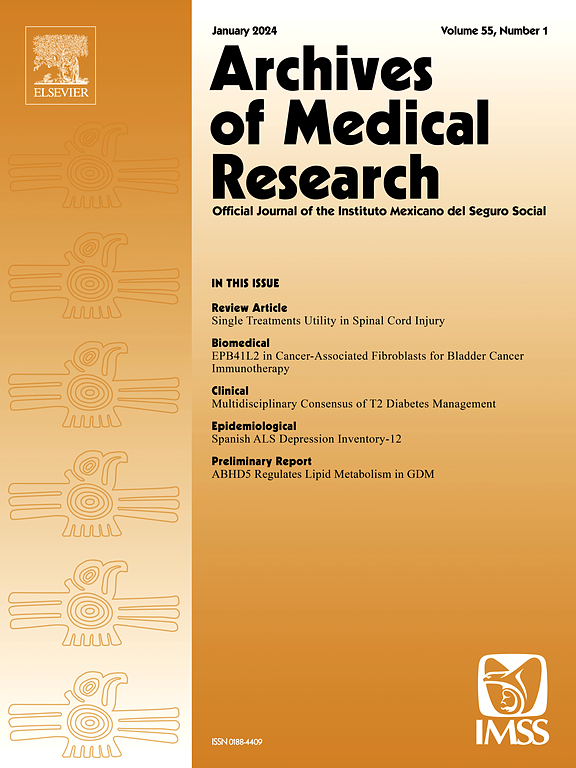妊娠期炎症:关键驱动因素、信号通路和相关并发症
IF 3.4
3区 医学
Q1 MEDICINE, RESEARCH & EXPERIMENTAL
引用次数: 0
摘要
在健康和疾病的发育起源(DOHaD)范式中,不利的产前环境与生命后期非遗传性疾病的发展之间存在明显联系。例如,暴露于宫内炎症与几种迟发性疾病有关,包括神经、心血管、免疫和代谢紊乱。此外,炎症加剧会损害母体和胎儿的健康,因为它可能导致自然流产、早产或宫内生长受限。与炎症相关的主要妊娠病理包括先兆子痫、妊娠糖尿病、肥胖和感染。炎症的主要原因可分为感染性和无菌性。因此,炎症的触发因素包括微生物、病毒、过量脂肪、胎盘功能障碍、组织分解产物和不平衡的免疫内分泌因素。炎症的其他病因包括环境因素(如污染物)、生活方式因素(如营养过量)和行为因素(如慢性压力、吸烟、酗酒和滥用药物)。驱动对这些损伤的反应的介质包括生化效应器(如细胞因子)、模式识别受体(如toll样受体)和免疫细胞。这些触发一系列事件,导致NF-kB和STATs等特定核因子的激活。这些信号网络的过度激活可破坏胎母界面的稳态,从而危及妊娠维持并影响胎儿编程机制。本综述探讨了妊娠期炎症相关的关键触发因素、信号通路和并发症,强调了孕产妇健康和充分的产前护理对减轻和预防短期和长期炎症相关风险的重要性。本文章由计算机程序翻译,如有差异,请以英文原文为准。
Inflammation in Pregnancy: Key Drivers, Signaling Pathways and Associated Complications
In the developmental origins of health and disease (DOHaD) paradigm, there is a clear link between an adverse prenatal environment and the development of non-hereditary diseases later in life. Exposure to intrauterine inflammation, for example, has been associated with several late-onset conditions, including neurological, cardiovascular, immune, and metabolic disorders. Moreover, maternal and fetal health are compromised under exacerbated inflammation, as it can result in spontaneous abortion, preterm delivery, or intrauterine growth restriction. Prominent gestational pathologies associated with inflammation include preeclampsia, gestational diabetes mellitus, obesity, and infections. The main causes of inflammation can be classified as either infectious or sterile in origin. Thus, triggers of inflammation include microorganisms, viruses, excess fat, placental dysfunction, tissue breakdown products, and unbalanced immunoendocrine factors. Other etiological agents of inflammation include environmental factors (e.g., pollutants), lifestyle factors (e.g., nutrient overload), and behavioral factors (e.g., chronic stress, smoking, alcohol, and drug abuse). The mediators that drive the response to these insults include biochemical effectors (e.g., cytokines), pattern recognition receptors (e.g., toll-like receptors), and immune cells. These trigger a cascade of events leading to the activation of specific nuclear factors such as NF-kB and STATs. Overactivation of these signaling networks can disrupt the homeostasis at the feto-maternal interface, which can jeopardize pregnancy maintenance and influence fetal programming mechanisms. This review examines the key triggers, signaling pathways, and complications associated with inflammation during pregnancy, emphasizing the importance of maternal well-being and adequate prenatal care in mitigating and preventing inflammation-related risks in the short and long term.
求助全文
通过发布文献求助,成功后即可免费获取论文全文。
去求助
来源期刊

Archives of Medical Research
医学-医学:研究与实验
CiteScore
12.50
自引率
0.00%
发文量
84
审稿时长
28 days
期刊介绍:
Archives of Medical Research serves as a platform for publishing original peer-reviewed medical research, aiming to bridge gaps created by medical specialization. The journal covers three main categories - biomedical, clinical, and epidemiological contributions, along with review articles and preliminary communications. With an international scope, it presents the study of diseases from diverse perspectives, offering the medical community original investigations ranging from molecular biology to clinical epidemiology in a single publication.
 求助内容:
求助内容: 应助结果提醒方式:
应助结果提醒方式:


